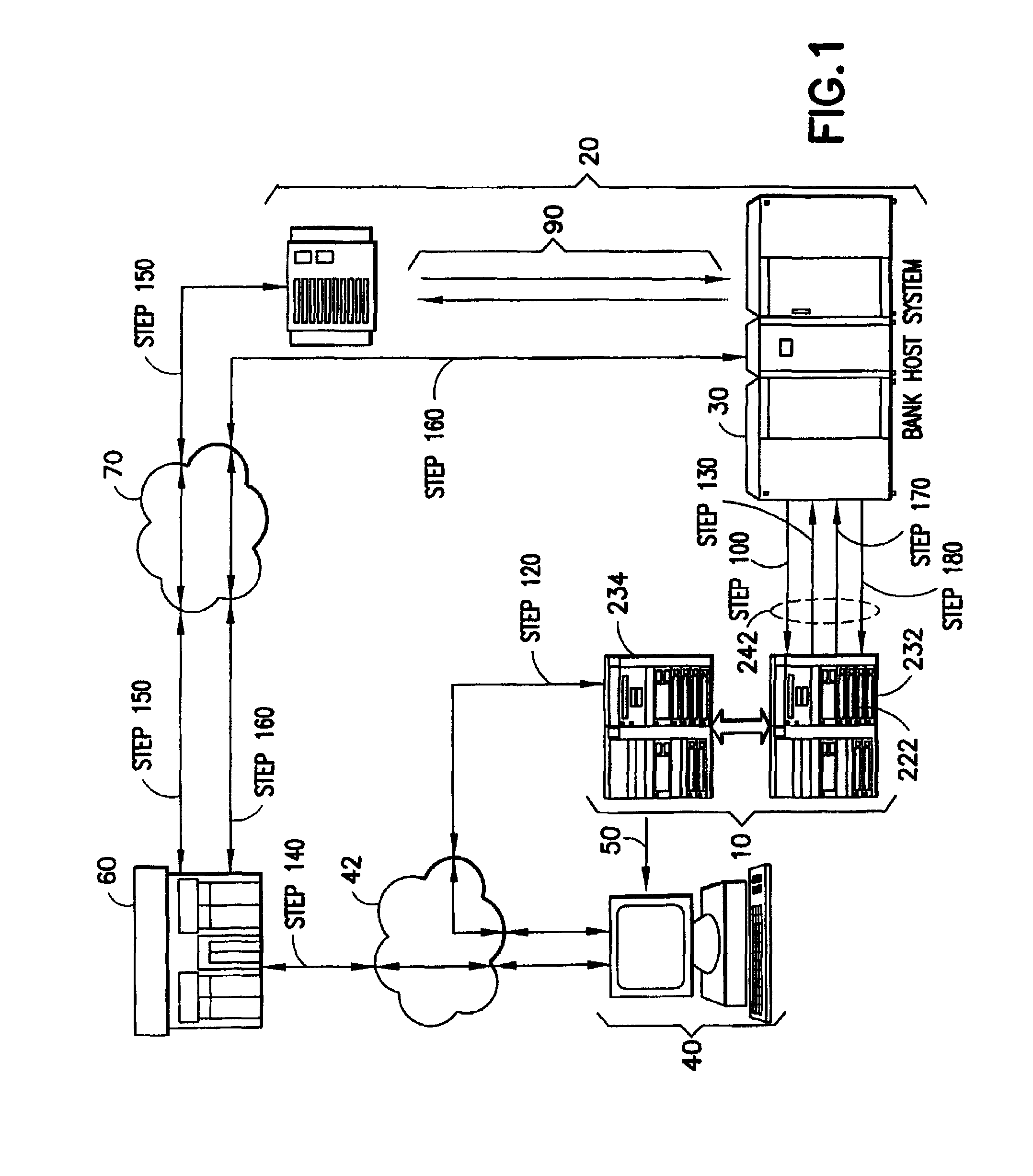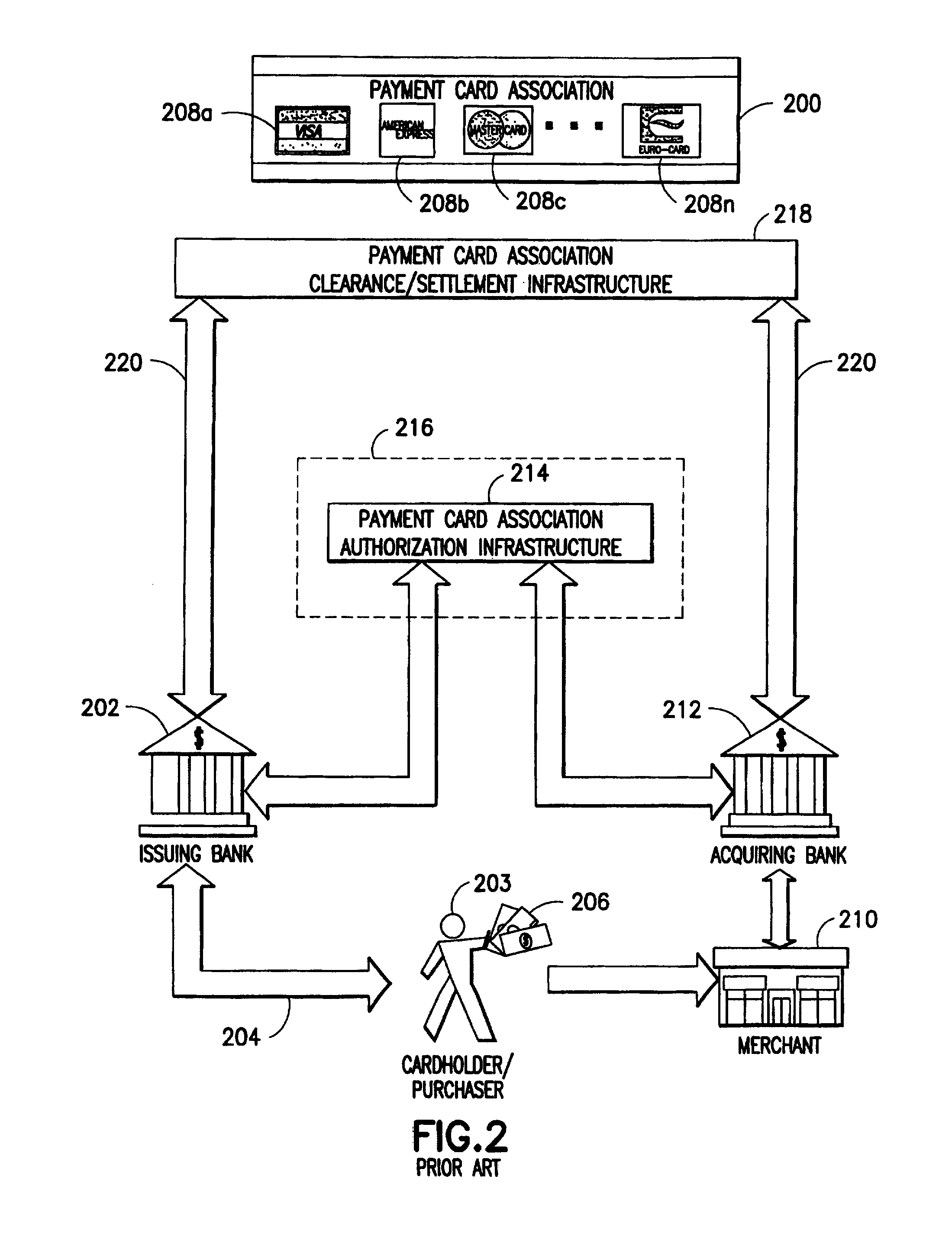This creates problems of storage and loss.
Furthermore, their untraceability makes them less suitable as gifts unless the giver and recipient are both present at the transfer or make use of some intermediary to transfer the gift, although doing so increases the chance of loss and may involve additional transaction costs for the delivery, insurance or
verification of
receipt.
However, a recipient of a check can not widely use the check as received, due to the increased
exposure to loss posed by accepting a “
third party” check.
Furthermore, although checks may be written for any specific amount up to the amount available in the account backing the check, checks have very limited transferability and must be supplied from a physical inventory.
Paper-based checking systems do not offer sufficient relief from the limitations of cash transactions, sharing many of the inconveniences of handling currency while adding the inherent delays and transaction costs associated with the
processing of checks before and after use.
However, obtaining a credit or
charge card requires the person seeking the card to prove a level of credit worthiness, since payment for goods and / or services purchased today with the card will not be made until some time in the future.
Unfortunately, in many instances, it was difficult for people to put aside a sufficient amount of money in the
bank account to make the secured
credit card really useful.
Furthermore, credit cards must physically be made sufficiently durable because they are not typically
single use vehicles of commerce.
Hence, the infrastructure associated with the creation, distribution and validation of
receipt of the cards can impose significant costs.
Debit cards appear similar to credit cards from the use standpoint, however, like secured credit cards, debit cards require sufficient money to be available in an account or a transaction involving the card will not be approved.
Charge cards are like regular credit cards in that they are unsecured, however they differ in the payment requirements.
However, in addition to having the drawbacks of more general use cards, the have the further
disadvantage due to the limitations imposed by their specialized or local nature.
None of the aforementioned types of cards have been suitable gifts in the physical presentment context for a number of reasons.
Moreover, once given, the owner generally loses the use of the card while it is in the possession of the recipient.
Of course, once given, the owner could also exert no control over its use beyond taking the additional step of canceling the card account and incurring the associated inconvenience of opening, or transferring to, a new account.
Still further, by adding an additional level of separation between the owner and the card, if the card was lost, the time
delay in noticing a loss of the card and informing the owner could be costly in time, inconvenience and / or finds.
Also, to use the card, the possessor of the card must be dishonest and misrepresent him / herself as the cardholder.
Last, and probably of greatest importance, due to merchant liability concerns regarding fraud, merchants accepting payment using one of those cards, for example by mail order / telephone order (MOTO), i.e. without physical presentation of the card, will generally not ship goods to any address other than the billing address for the card, further restricting use of the card by anyone other than the registered cardholder.
Furthermore, their use is greatly restricted by compatibility and acceptability problems since any usage is limited by the value “on” the card and / or the
expiration date (if any).
It further has the associated creation, delivery and distribution costs.
The
MasterCard gift card thus has similar drawbacks present with any other
debit card, including that it must be physically issued and provided and can not be activated until physically received by the recipient.
However, it will likely take a long time for that wave to truly hit the
shore.
Many necessary or popular businesses have limited or no internet presence, and there is still a great reluctance among the general
population in the United States to transact business over the internet using forms of
electronic money not endorsed or backed by the U.S. government.
Furthermore, the
electronic data makeup of the various
electronic money schemes are too incompatible with each other to be freely exchangeable with each other.
Furthermore, due to their incompatibility, merchants' costs increase because they must add an acceptance infrastructure for each such “currency” they wish to accept over and above any existing infrastructure to which they belong and may incur transaction costs to “cash in” the
electronic money or to “convert” to official U.S. currency.
Since those fractions are not recognized currencies of exchange large amounts may need to be accumulated before they can meaningfully and cost effectively be converted to U.S. dollars.
Furthermore, electronic money is more “unstable” in most instances than unstable national currencies, because unlike a country's currency, a “coiner” or “authenticator” of electronic money can disappear overnight with all its assets thereby rendering any outstanding “scrip” or “coinage” unusable by holders for any purpose.
Thus, while sophisticated business may be willing to adopt the use of electronic money schemes among themselves, those problems, and the public perceptions thereof, are not conducive to forming a comfortable
gift giving environment between individuals.
Furthermore, redemption may place a special burden on merchants, due to the infrequency of
receipt (and hence lack of knowledge of how to
handle acceptance) or by imposition of redemption charges or special redemption procedures which must be followed by the merchant in order to be credited with the appropriate funds.
Thus, none of the above provide a cost favorable, overhead favorable, sufficiently convenient, widely acceptable way to give a gift which offer advantages for the purchaser, recipient and merchant.
 Login to View More
Login to View More  Login to View More
Login to View More 


